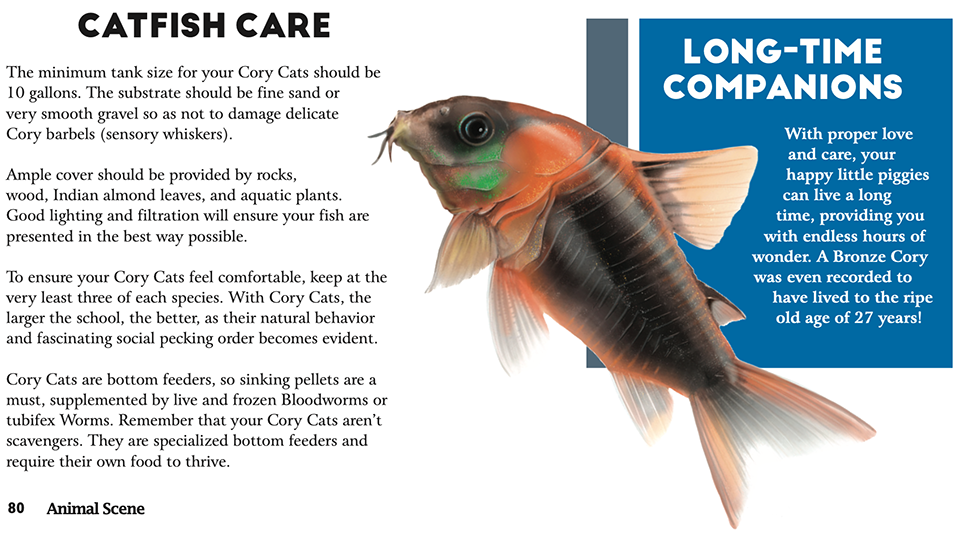CHARMING CORYDORAS CATFISH
Corydoras Catfish, known by aquarists as Cory Cats, are some of the hobby’s best loved fish.
Small in size, peaceful in nature and fascinating in behavior, Cory Cats are small armored Catfish who inhabit the waterways of the Amazon. The name corydoras literally means helmet skin in Greek, because these Catfish are covered by special scales called scutes, made of collagen and minerals. So effective is this armor that it can stop even a Piranha’s bite.
Over 170 Corydoras species have been described, with most growing no more than four inches. They are easy to keep, adapt well to aquarium life, and breed readily in captivity.
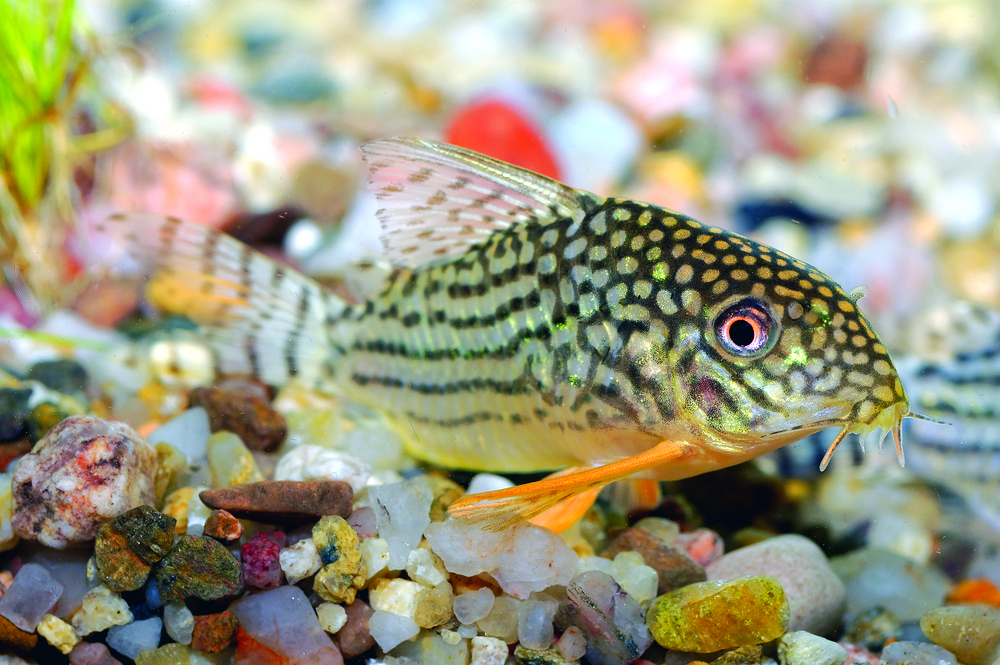
THEIR HOME HABITATS
Cory Cats typically inhabit murky, slow- flowing waters of the Amazon in South America. They frequent shallow rivers, ponds, and streams, with sandy or muddy bottoms. Roots, branches, dead leaves, plus heavy vegetation provide cover from predators like River Otters and Freshwater Dolphins.
To adapt to low oxygen waterways, Cory Cats have evolved to gulp air directly from the surface, absorbing oxygen via their intestines. This curious habit is displayed even in well- oxygenated tanks.
Many species can also vocalize, squealing like mice upon reaching the surface of the water. This is either a general sign of stress or a warning to other Cory Cats that a predator is skulking about.
Wild Cory Cats aggregate in huge schools of hundreds, even thousands of fish. They share their home waters with familiar aquarium fish like Tetras, Discus, Angelfish, Silver Dollars, and so on.
POPULAR SPECIES
Cory Cats have been mainstays for decades, first caught wild from the rivers of South America and soon found the world over. They are peaceful and make great community tank fish, livening up the bottom of any aquarium. The most popular and commonly available are the following.
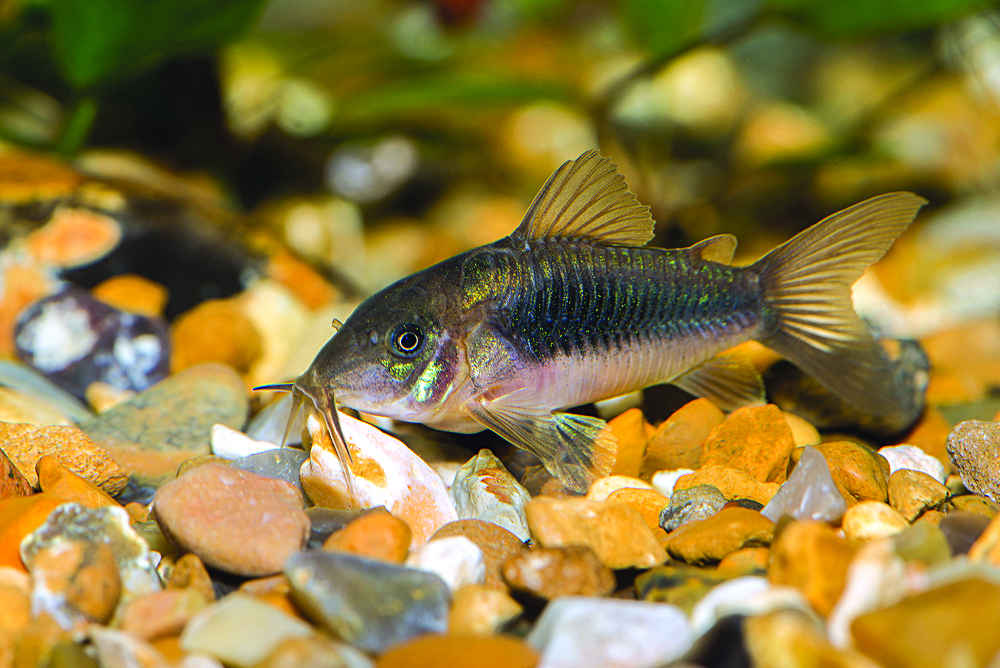
• BRONZE CORYDORAS (CORYDORAS AENEUS)
A mainstay since the 1950s, the bronze Cory was until recently the most popular and well known of all Cory Cats.
Found throughout the Amazon and growing just under three inches, their metallic green flanks complement the subtle pinks and browns of their flanks. Albino and long-finned strains have also been commercially developed.
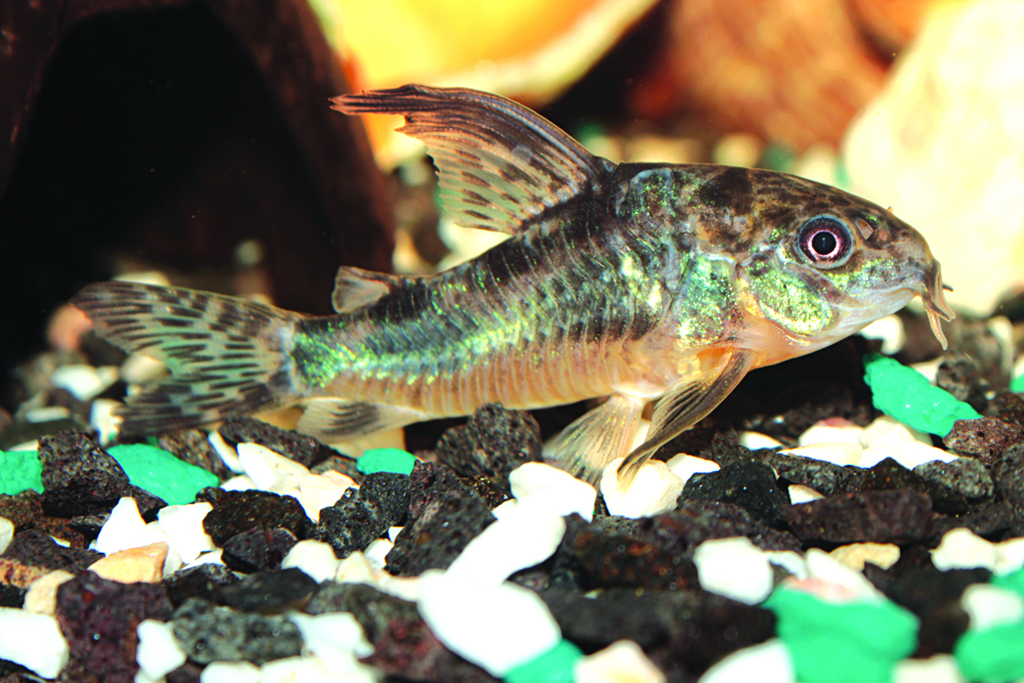
• PEPPERED CORYDORAS (CORYDORAS PALEATUS)
The mottled spots of this Catfish provide it with a measure of camouflage in the sandy substrates of their native Argentina, where the water is cooler than the rest of the Amazon.
They are slightly longer in profile than the bronze Cory, growing about three inches. They too have an albino version.
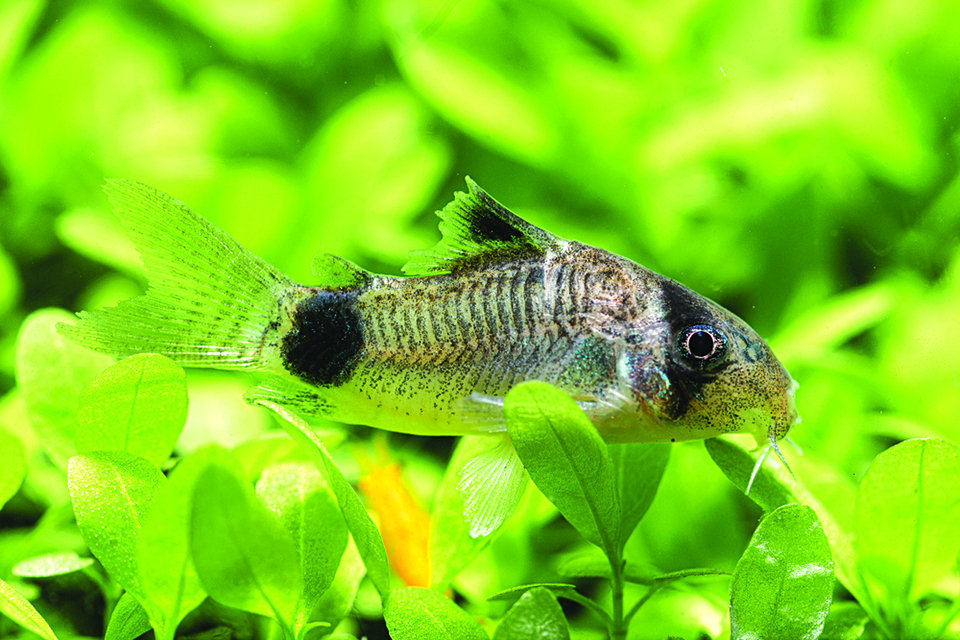
• PANDA CORYDORAS (CORYDORAS PANDA)
When this small Catfish was introduced in the 1980s, they made quite a splash, with buyers paying premium prices for fish caught straight from the rivers of Peru. Fortunately, the Panda Cory proved easy to breed and the little fish are now affordable.
Their black markings contrast beautifully with their pink bodies, hence the name. These small Catfish grow no more than two inches.

• STERBAI CORYDORAS (CORYDORAS STERBAI)
Now the most popular of all Cory Cats, these fish were highly sought-after in the 1990s.
One of the most strikingly-patterned Cory Cats, their horizontal black scribbles are accentuated by orange fins which glow under good lighting. Once shipped exclusively from Brazil, these fish, like the Panda Cory, are now farmed en masse, with tank-bred fish significantly tougher than wild- caught ones.
These fish grow no larger than 2.5 inches and require well- filtered water to thrive.
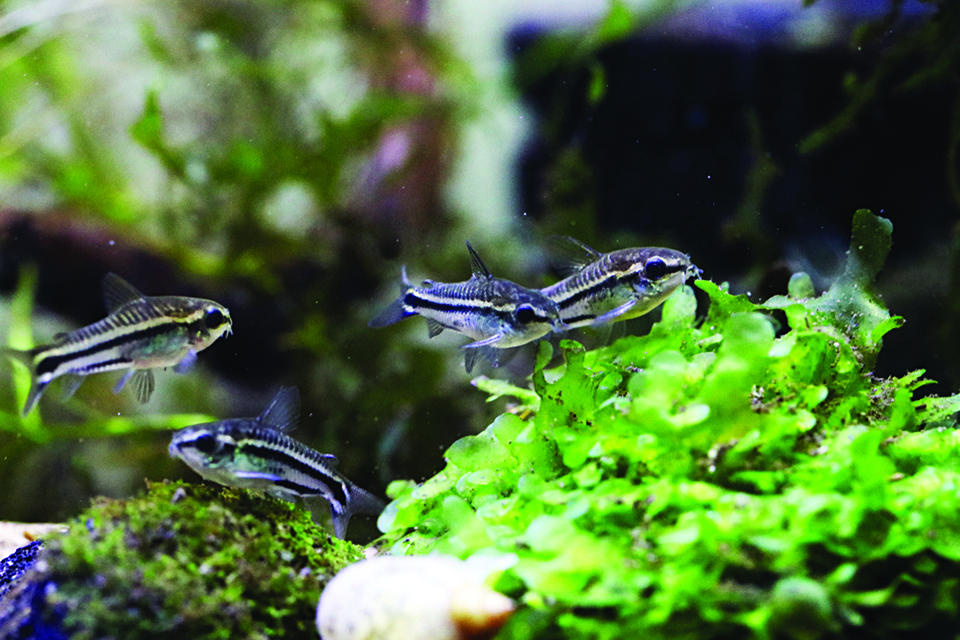
• PYGMY CORYDORAS (CORYDORAS PYGMAEUS)
Among the smallest of the Cory Cats, this fish grows no larger than one inch and has markings similar to the otocinclus Catfish – a horizontal black stripe against a greenish gray background.
Perfect for nanotanks, these peaceful fish make great tankmates for tiny fish like Chili and Galaxy Rasboras, plus smaller Tetras.
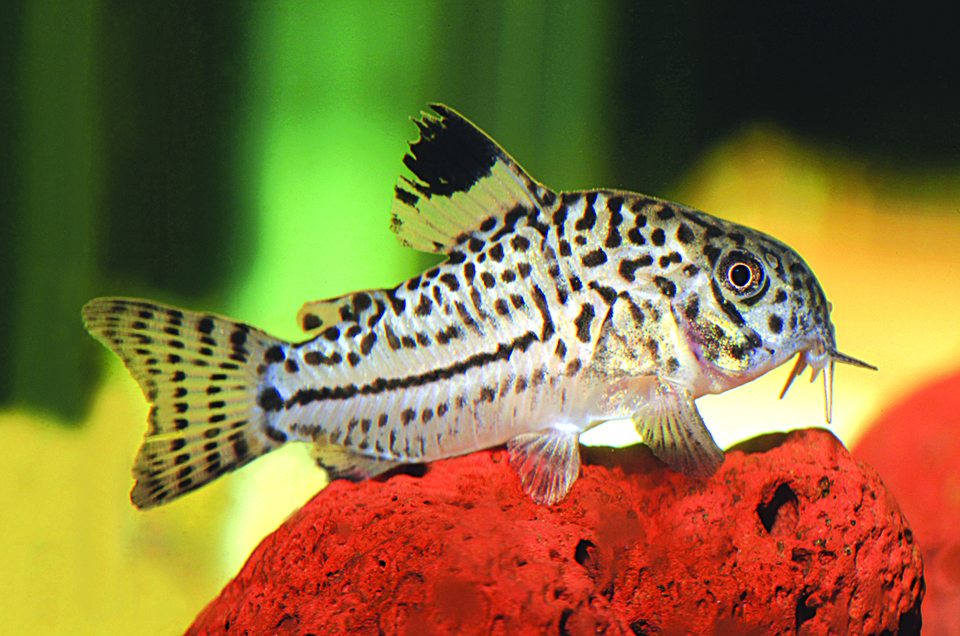
• THREE-LINED CORYDORA (CORYDORAS TRILINEATUS)
Usually mislabeled as the similarly-marked but much rarer Julii Corydoras (Corydoras julii), the three-lined Cory inhabits waterways in Brazil, Peru and Colombia.
Growing about 2.5 inches, they sport a beautiful black dorsal fin. Like all Cory Cats, they do best in groups of at least five or six.
You are bound to encounter more exotic Cory Cat species, from the beautiful Skunk Cory to the jaw-dropping neon orange Laser Cory. You might also encounter the larger Brochis or longer Aspidoras Catfish, who have similar temperaments and requirements.
More Cory species are being discovered and new color strains are being developed.
